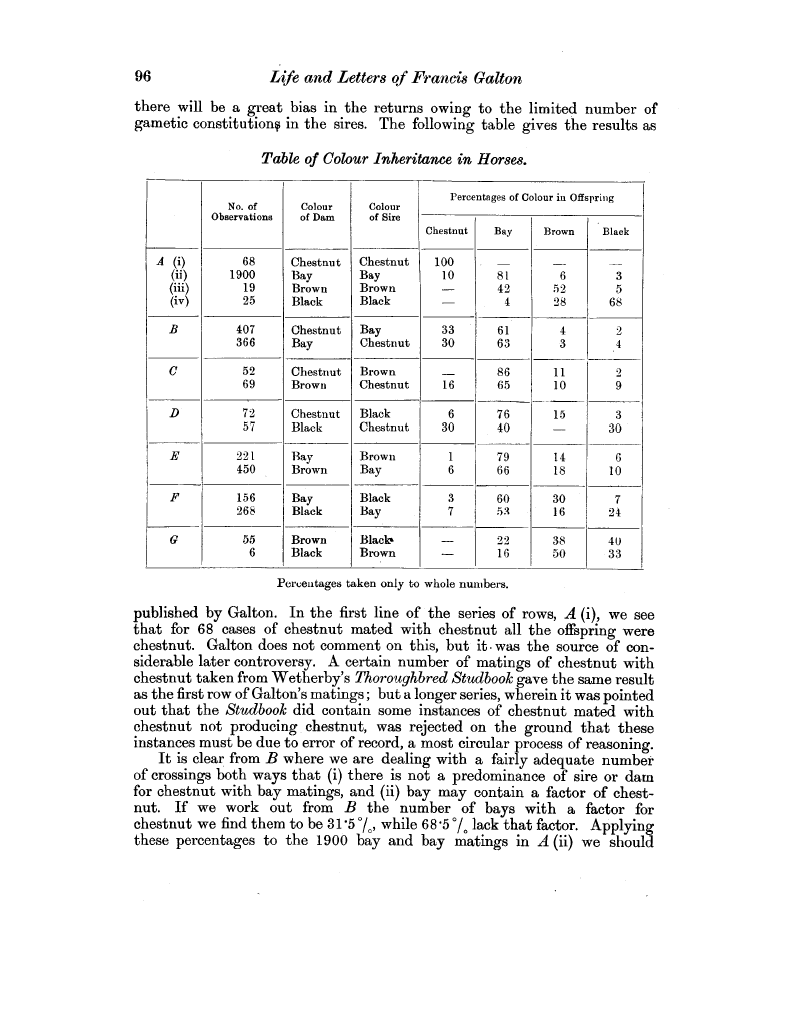| ||||||

OCR Rendition - approximate
96 Life and Letters of Francis Galton there will be a great bias in the returns owing to the limited number of gametic constitution* in the sires. The following table gives the results as Table of Colour Inheritance in Horses.
Percentages taken only to whole numbers. published by Galton. In the first line of the series of rows, A (i), we see that for 68 cases of chestnut mated with chestnut all the offspring were chestnut. Galton does not comment on this, but it . was the source of considerable later controversy. A certain number of matings of chestnut with chestnut taken from Wetherby's Thoroughbred Studbook gave the same result as the first row of Galton's matings; but a longer series, wherein it was pointed out that the Studbook did contain some instances of chestnut mated with chestnut not producing chestnut, was rejected on the ground that these instances must be due to error of record, a most circular process of reasoning. It is clear from B where we are dealing with a fairly adequate number of crossings both ways that (i) there is not a predominance of sire or dam for chestnut with bay matings, and (ii) bay may contain a factor of chestnut. If we work out from B the number of bays with a factor for chestnut we find them to be 31.5 °/0, while 68.5 °/o lack that factor. Applying these percentages to the 1900 bay and bay matings in A (ii) we should
| ||||||||||||||||||||||||||||||||||||||||||||||||||||||||||||||||||||||||||||||||||||||||||||||||||||||||||||||||||||||||||||||||||||||||||||||||||